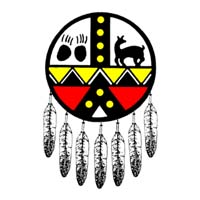The University of Maine at Presque Isle is partnering with the Aroostook Band of Micmacs Boys and Girls Club of America and the Francis Malcolm Science Center to provide several science exploration activities this spring specifically designed for local Native American students in elementary, middle school, and high school.
Dr. Rachael Hannah, UMPI Assistant Professor of Biology, was awarded a $565 Diversity Mini-Grant from the University of Maine System’s Diversity Committee to coordinate and lead the science related activities.
Science, Technology, Engineering and Math, also known as the STEM fields, are the largest growing job sectors in Maine. This grant will help to engage students in science and perhaps consider a career in the STEM field.
“I am a scientist at heart and by profession and truly love working with students of all ages to explore their inner scientist,” Dr. Hannah said. “I hope to show the students we’re working with as part of this project how hands-on science really is and how much exploration of scientific material can be done outside the classroom.”
Officials with the Aroostook Band of Micmacs are similarly excited about the collaboration.
“We are ecstatic about the opportunity to partner with the University of Maine at Presque Isle to engage our youth in the STEM fields,” Nicole Francis, Education Director for the Aroostook Band of Micmacs, said. “The real-life, hands-on experiences in which our students will be participating will show that science can be fun and exciting, thus igniting a desire to join in on this shared peer experience and maybe even think about a career in a science field.”
The grant will support three learning events. First, on Friday, March 15, from Noon to 4 p.m., Micmac students in grades 6 to 12 will take part in a Science Exploration Day at UMPI. After a quick lunch in UMPI’s Kelley Commons, students will head to the science labs, where they will take part in hands-on experiments in DNA and neuroscience with Dr. Hannah. They also will build their own map and database using Geographic Information Systems technology with Dr. Chunzeng Wang, Associate Professor of Geology, Environment, and GIS, and experiment with sheep brain anatomy with Dr. Scott Dobrin, Assistant Professor of Biology. Several UMPI students, including members of UMPI’s Native Voices student group, will be on hand to serve as mentors for the Micmac students.
The second learning event will take place during University Day on April 10. Micmac students in grades 9 to 12 will attend the academic and student research focused day of activities and get an inside look at what it’s like to be a college student and present research to campus and community members. Students will be paired with an UMPI undergraduate majoring in biology or environmental science for the day.
Also in April, the third learning event will match up UMPI undergraduates with Micmac students in grades pre-K to 5 for a field trip to the Francis Malcolm Science Center. The group will explore age appropriate science experiences.
In describing the importance of the work being done in this grant project, Nicholas Paul, one of the Micmac coordinators involved, cited the words of Howard Rainer, a Taos Pueblo-Creek Indian from New Mexico: “Children learn from what they see. We need to set an example of truth and action.”
Officials hope the learning activities will help to inspire the local Micmac students involved to consider and further explore careers in science, biology, healthcare, and environmental science.
“Much of the science that is performed today seeks to answer questions related to our health and how our environment impacts our health,” Dr. Hannah said. “To attract young minds with different viewpoints to scientific endeavors will only make our scientific observations and results more powerful and useful. We hope to show these students how attainable a career in a scientific field is, and how valuable their historic insights to our health and environment are.”
